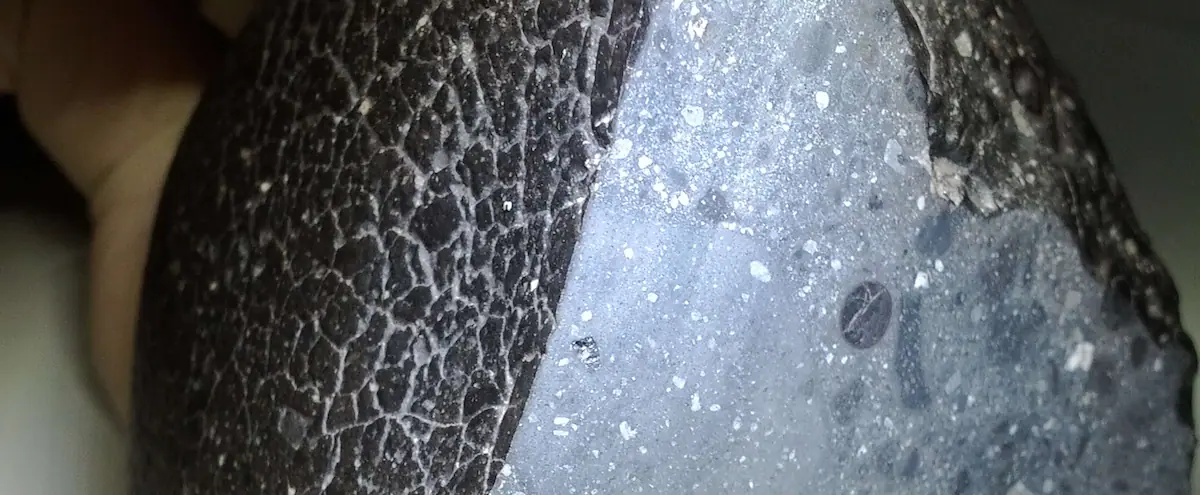Paris | Scientists have identified the region of origin of the Martian meteorite, a veritable “open book” about the first moments of Mars, potentially rich in lessons about the formation of the Earth.
• Read also: NASA reveals all the first images of the most powerful space telescope, James Webb
• Read also: The first image of the James Webb Telescope reveals the very young universe
“Black Beauty,” NWA 7034 of its nickname, has stunned geologists since its discovery in the desert in 2011. This block, which is easy to hold in the hand and weighs just over 300 grams before cutting, is “the oldest rock we have, whether planetary scientist Sylvain Polly said , who co-signed the study published in Nature Communications to AFP, says that the planet Mars but also approx.
It contains zircon, a type of mineral, dating back 4.48 billion years. Or “about 80 million years after planet formation began” for the solar system, says Mr. Polly, a professor at the University of Paris-Saclay’s Earth Sciences Laboratory.
Thus NWA 7034 is an “open book about the first moments of Mars,” when the surface of magma began to solidify. While we’ve “lost this primal history of our Earth,” the majority of the original lands have disappeared, in a major reworking of plate tectonics – a phenomenon that largely saved Mars.
The team of researchers, led by planetary scientists from Australia’s Curtin University in Perth, with a strong contribution from French institutions, has succeeded in accomplishing the identification of the exact origin of the meteorite, in an area hosting a very primitive crust of the Red Planet.
He had to identify a crater formed as a result of a meteorite impact from space “with sufficient force to eject rocks at a very high speed, more than 5 km/sec, to escape Martian gravity,” explains AFP Anthony Lagen, a planetary scientist at Curtin University and first author of the study.
These craters must be at least 3 km in diameter. Problem, Mars has at least 80,000 of this size.
Second evidence, researchers learned that NWA 7034 was ejected into space about five million years ago, thanks to a measurement of its exposure to cosmic rays.
90 million photos of the pits
“So we were looking for a crater that’s very small and large,” says Anthony Lagen, whose doctoral thesis focused specifically on dating Martian craters.
Another clue, analysis of the composition of “Black Beauty” revealed that it was brutally heated 1.5 billion years ago, possibly due to an asteroid impact. In other words, the boulder was first extracted from the surface before it fell further, with another impact throwing it this time into space, all the way to Earth.
Armed with this information, Anthony Lagen has improved the crater detection algorithm developed at Curtin. Before making him grind with a supercomputer a mosaic of 90 million images of Mars craters, accumulated thanks to NASA’s satellite camera.
The result narrowed the selection down to 19 holes and then only one, the Karratha. This 10-kilometre-diameter crater is in a “very ancient region of the Southern Hemisphere, rich in potassium and thorium, like Black Beauty,” says Lagen. The last argument, the meteorite is the only one of the Martians that is strongly attracted, but “the region where the Karatha is located is the most attractive on Mars.”
Spread over the Terra Cimmeria and Sirenum regions, this region “is probably a remnant of the oldest crust on Mars,” according to the study. who begs to send an expedition dedicated to studying its geology.
Professor Polley points to a kind of “bias”, which focused Mars missions on searching for traces of water and life, at the expense of earlier times, which may have allowed them to appear. Moreover, after its discovery, NWA 7034 took the front page due to the presence of water in it.
However, to understand the formation of the crusts of the first planets is to understand what happened in the beginning, remembers Mr. Lagne, and “how one gets to a planet as exceptional as Earth in the universe.”

“Proud thinker. Tv fanatic. Communicator. Evil student. Food junkie. Passionate coffee geek. Award-winning alcohol advocate.”

